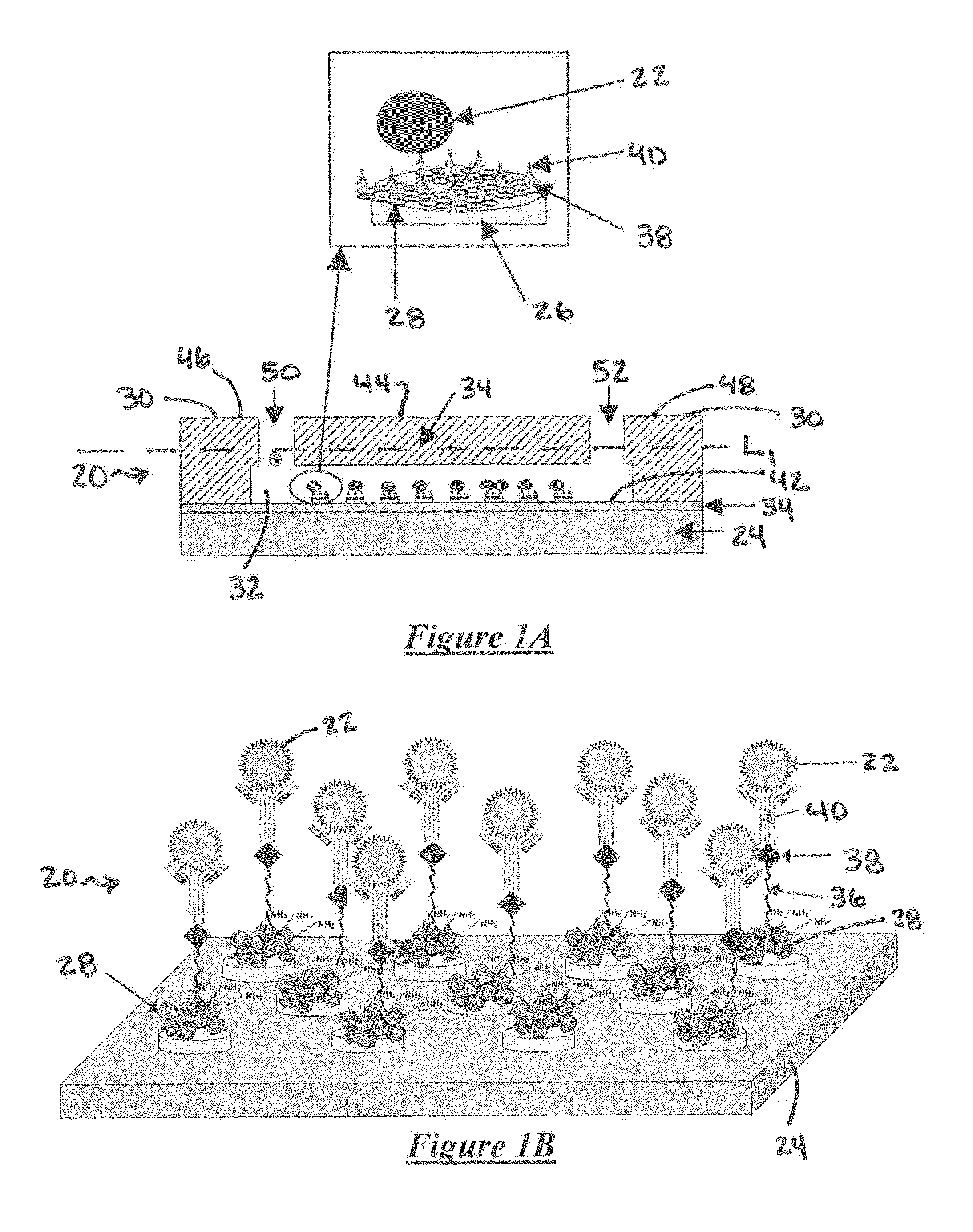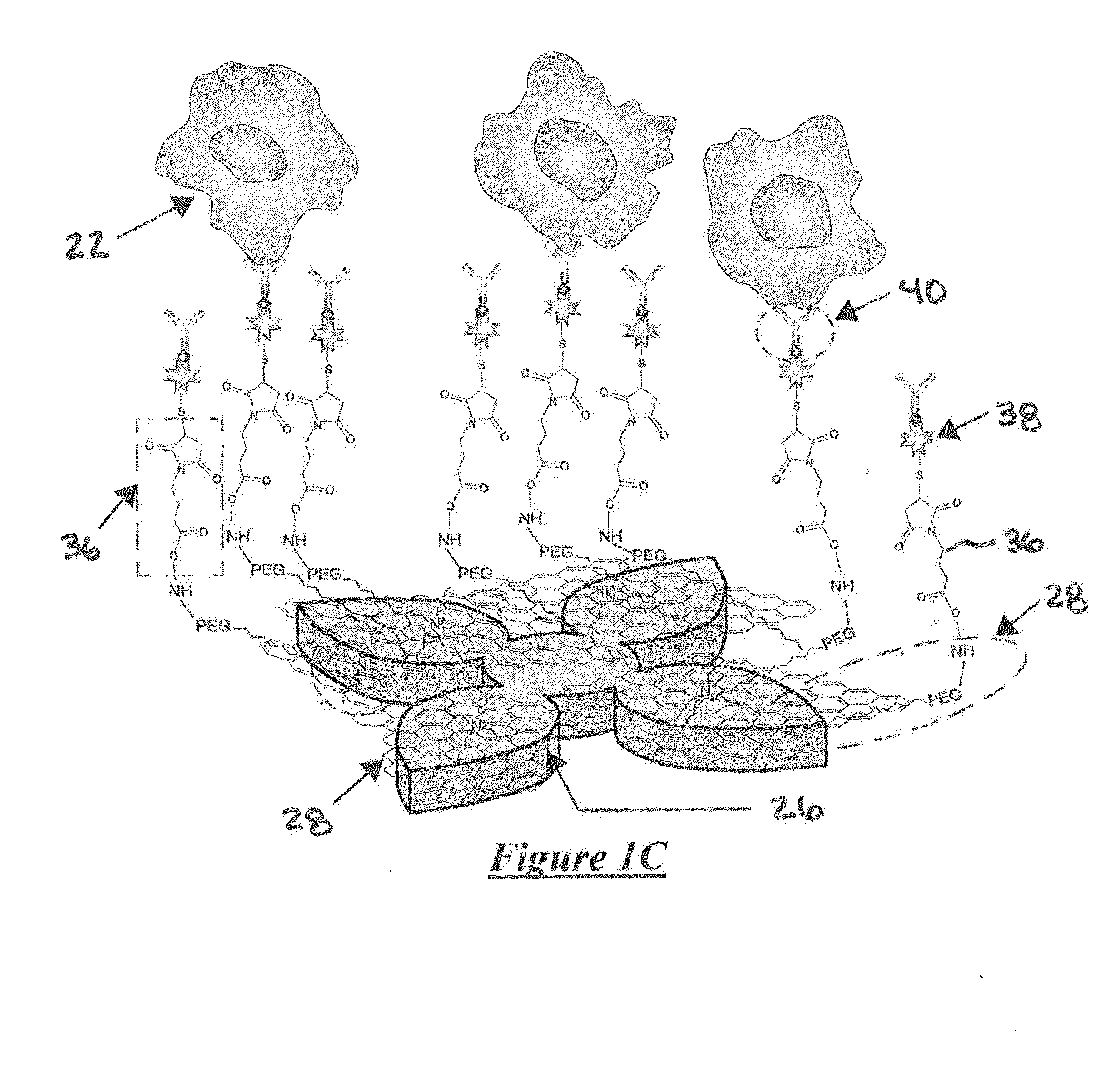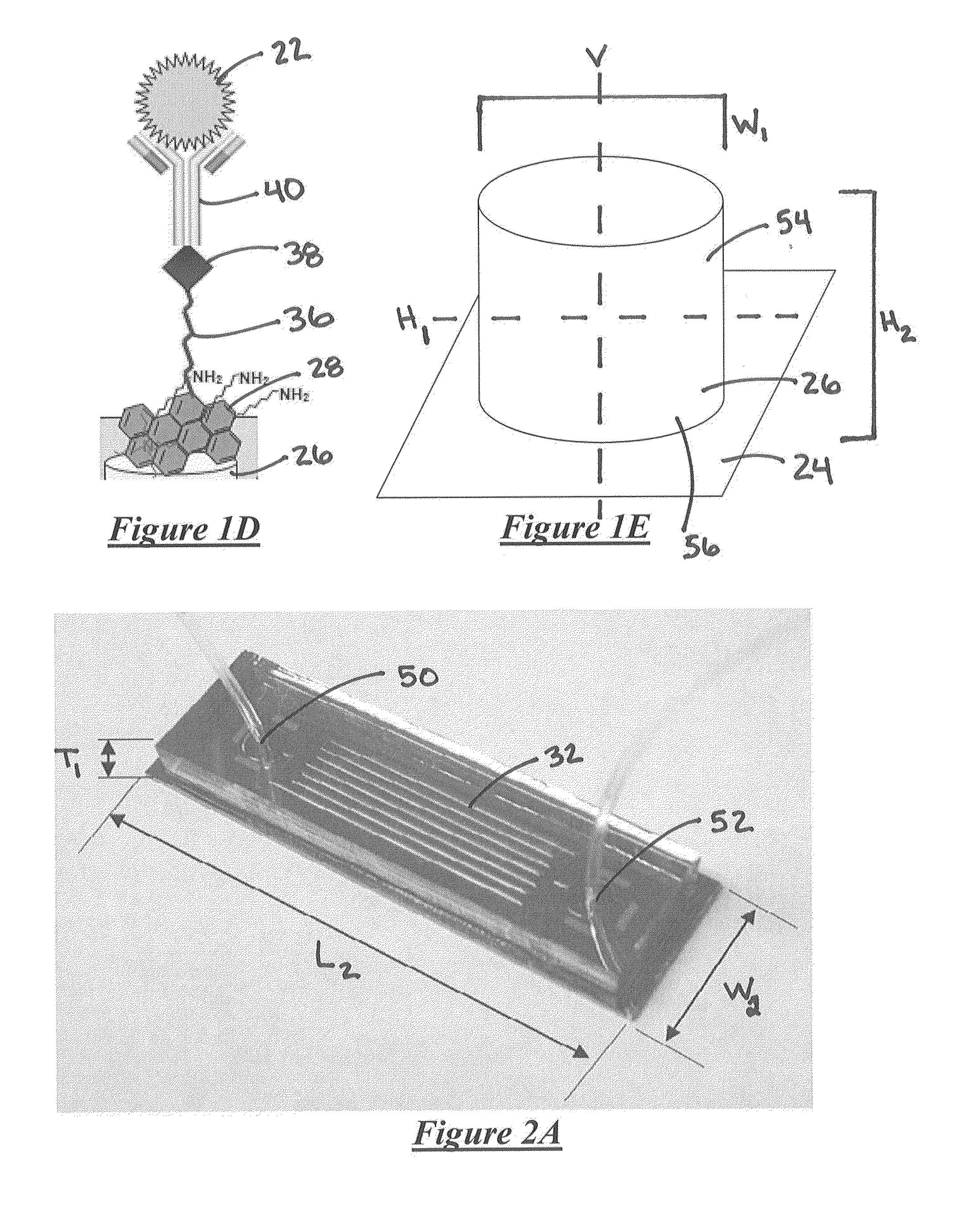System for detecting rare cells
- Summary
- Abstract
- Description
- Claims
- Application Information
AI Technical Summary
Benefits of technology
Problems solved by technology
Method used
Image
Examples
examples
Simulation of One Embodiment of a Pattern of Extensions in a Microfluidic Device
[0134]A simulation of fluid flow in a theoretical microfluidic device is performed with Comsol Multiphysics 4.2. A three-dimensional leaf pattern of (gold) extensions disposed on a substrate is generated and analyzed with a laminar flow module, the results of which are set forth in FIGS. 6 and 7. The height of the extensions is assumed to be 3 μm although the actual height of the gold is about 100 nm. An effective height of the extensions including the gold may be as high as 1-3 μm because of addition of functional groups.
[0135]In the simulation, the effect of the leaf pattern on a fluid field is examined by increasing a height of the fluid field from 10 μm to 30 μm, see FIG. 6. The Figs. show that, at or below 10 μm, the fluid field is disturbed significantly by the leaf pattern while, as the height of the leaf pattern increases, the effect of this disturbance decreases. This disturbance may enhance the...
PUM
 Login to View More
Login to View More Abstract
Description
Claims
Application Information
 Login to View More
Login to View More - R&D
- Intellectual Property
- Life Sciences
- Materials
- Tech Scout
- Unparalleled Data Quality
- Higher Quality Content
- 60% Fewer Hallucinations
Browse by: Latest US Patents, China's latest patents, Technical Efficacy Thesaurus, Application Domain, Technology Topic, Popular Technical Reports.
© 2025 PatSnap. All rights reserved.Legal|Privacy policy|Modern Slavery Act Transparency Statement|Sitemap|About US| Contact US: help@patsnap.com



